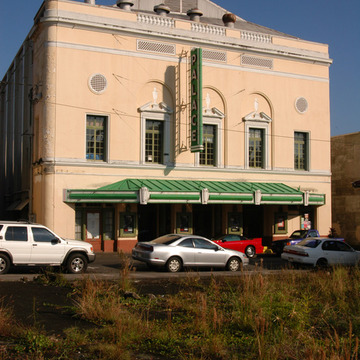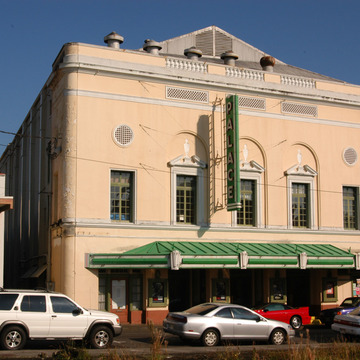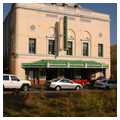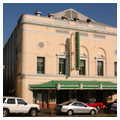“Metropolitan in every respect.” With one phrase the Hilo Tribune-Herald expressed the pride Hilo citizens felt in their new Renaissance Revival movie palace when it opened. Compared to the frame movie theaters found in plantation communities, the Palace presented an air of urban sophistication. Its plaster facade and ornate second-story windows resonate its refinement. The neon Palace sign replaced the original in the 1930s; the Art Deco marquee dates from a remodeling in 1940. The plaster facade sheathes a still sturdy redwood frame. Inside, the three-tiered, 875-seat auditorium is the largest on the island. Its wall sconces, panels painted in foliated patterns, and geometrically ornamented ventilation screens were similar to those of the no longer extant Princess Theater in Honolulu, which Davis and Fishbourne designed in 1922. The Palace was the first building on the island of Hawaii to have central air-conditioning. The theater closed in 1981, and after a ten-year vacancy was purchased and slowly rejuvenated by Hilo Main Street.
You are here
Palace Theater
If SAH Archipedia has been useful to you, please consider supporting it.
SAH Archipedia tells the story of the United States through its buildings, landscapes, and cities. This freely available resource empowers the public with authoritative knowledge that deepens their understanding and appreciation of the built environment. But the Society of Architectural Historians, which created SAH Archipedia with University of Virginia Press, needs your support to maintain the high-caliber research, writing, photography, cartography, editing, design, and programming that make SAH Archipedia a trusted online resource available to all who value the history of place, heritage tourism, and learning.





